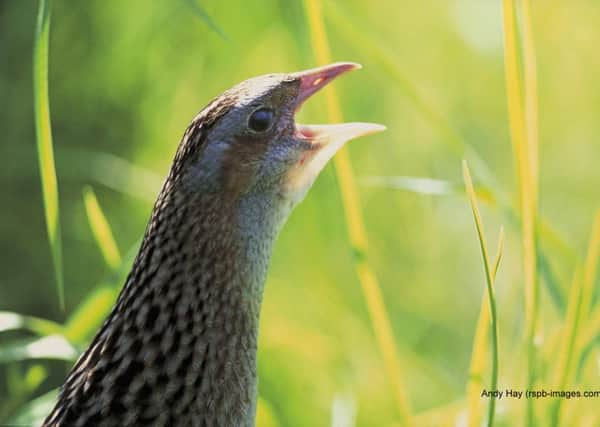Corncrake calls heard on Rathlin


The male’s distinctive call at dusk and through the night during breeding season (May to August) is often the only indication that these secretive birds, relatives of the moorhen and coot, are hiding in the dense summer vegetation.
Sadly, within a generation, this species has been virtually wiped out in Northern Ireland, largely due to changes in agricultural practices, and the last reported breeding pair in Northern Ireland was in the late 1990s.
Advertisement
Advertisement
However, the species can still be found in large numbers on the west coast of Scotland and in Donegal within 30 miles of Rathlin Island.
Through its Giving Corncrake a Home project, RSPB NI has been working for a number of years to entice the species back to Rathlin.
A male was heard calling in the Church Bay area in May 2014 but, sadly, it was disturbed and did not attract a mate.
At the time, the RSPB said its work for the species would continue and the latest development proves their perseverance is paying off.
Advertisement
Advertisement
Every summer this charismatic bird makes a long distance trip from Africa and when they arrive they look for an appropriate habitat in which to breed. Corncrakes are shy, secretive birds and look for protective cover where they can call from and find food.
Early in the breeding season they use early growing tall vegetation like nettles, cow parsley, and irises to hide amongst and RSPB NI staff and volunteers have been working hard to provide more suitable early vegetation cover on Rathlin.
Work parties gather nettle roots from the mainland and ferry them over the Rathlin for replanting around the edges of hayfields and brambles are cleared to create ‘corncrake corridors’ that provide essential connectivity between areas of suitable habitat.
Rathlin Island warden Liam McFaul said he was ‘delighted’ that this work is paying off.
He added: “Even if the male doesn’t manage to attract a mate this year, it’s a really encouraging sign that the work we’re is doing for these shy, secretive birds is making a difference.”